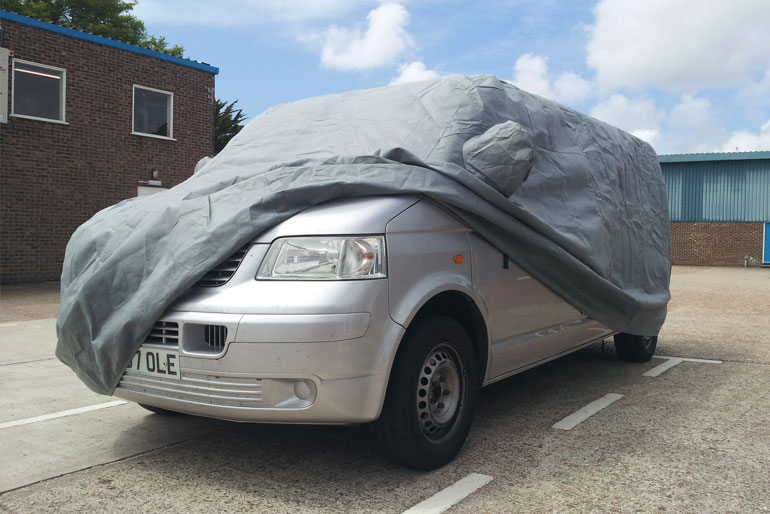Protecting your van from the elements can prevent premature wear and maintain its resale value. With the vast array of covers available in the market, selecting the right one can be an overwhelming process. From understanding different materials to recognizing the impact of the climate you live in, there’s much to consider. In this article, we will guide you through the critical aspects of choosing the best van cover that suits your needs and budget. So sit tight and prepare to shield your vehicle with confidence.
Understanding The Different Types of Van Covers Available
When it comes to van covers, variety is abundant. There are water-resistant covers designed for occasional rain showers, and waterproof covers made for heavy downpour regions. For those living in sun-drenched areas, UV-resistant covers are available to protect the paint from fading. You may also encounter all-weather covers that offer a combination of protections, suiting various environmental conditions.
Indoor van covers, on the other hand, are tailored to shield your vehicle from dust, scratches, and dings that often happen in garages. They are usually lighter and made of softer materials that are gentle on the paint. Some covers are designed to fit your vehicle’s exact dimensions, while others are more generic and can fit vans of similar sizes. It is important to match the cover type to your specific needs.
Climate Considerations: Selecting The Right Cover For Your Environment
The environment where you reside plays a critical role in the type of van cover you should choose. For those in rainy regions, a waterproof or water-resistant cover is a must to prevent moisture accumulation that could lead to rust or mold. If your area is prone to snow, a heavy-duty cover capable of bearing weight without tearing or collapsing is ideal.
In regions with high sun exposure, a UV-resistant cover becomes a priority. Prolonged exposure to sunlight can cause paint fading, cracking, or peeling, so a cover that mitigates these risks is essential. Conversely, in windy areas, a van cover with sturdy straps or a fitted design can prevent the cover from being blown away or scratching the vehicle.
Those living in coastal areas should also pay attention to covers designed to resist salt air, which can accelerate corrosion. For van owners in urban settings, a cover with reinforced security features such as lockable cables can deter theft and vandalism. Each climate comes with its unique challenges, and the right cover will address the specific issues of your locale.
No matter where you live, environmental factors should shape your decision. A cover that’s ill-suited for your regional climate can do more harm than good. It’s about matching the cover to the conditions it’s going to face, ensuring it performs optimally for as long as possible and your van remains in top condition.
Maintenance and Care Tips To Extend the Life of Your Van Cover
Efficient maintenance plays a vital role in extending the lifespan of your van cover. Regular cleaning of the cover prevents dirt accumulation that can cause wear over time. Most covers can be washed with mild detergent and water—avoiding harsh chemicals and power washers will help maintain the integrity of the fabric.
Ensuring your van cover is completely dry before storing or reapplying it is essential. Trapped moisture can lead to mold and mildew, which can weaken the material and reduce its protective capabilities. If you’ve washed it or if it’s been exposed to rain, let it dry thoroughly in the sun if climate conditions allow.
Proper storage is also important. When not in use, fold the cover neatly and store it in a cool, dry place. Many van covers come with a storage bag, which protects them from dust and pests. This careful approach prevents unnecessary damage and ensures the cover remains in good condition for future use.
Periodic inspections can help detect problems before they worsen. Check for any rips, tears, or worn straps that might require attention or repair. Timely care not only prolongs the cover’s life but also ensures it continues to provide the best protection for your van against the elements. Altogether, finding the right van cover is about recognizing your specific needs based on vehicle use, environment, and personal preference. By investing the time to understand the options and keeping up with proper maintenance, you can ensure your van remains shielded from the elements. Overall, a well-chosen cover is a small investment that can lead to significant benefits over the long term.







